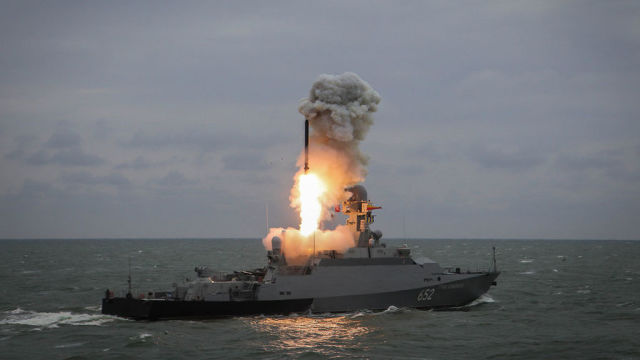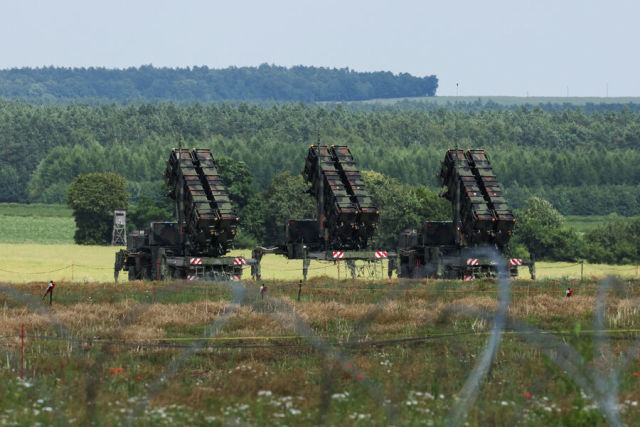Colonel Khodarenok: NATO will not be able to shoot down Russian missiles from Poland and Romania
In the West, they proposed shooting down Russian missiles over Ukraine from Poland and Romania. Several German parliamentarians supported this idea, believing that it would take the burden off the Ukrainian air defense. Former NATO Secretary General Anders Fogh Rasmussen also called for the use of air defenses of Ukraine's neighbors to help Kiev. Why NATO countries will not be able to shoot down Russian missiles from their territory and what an attempt to implement such a proposal may lead to - in the material of the military observer "Gazeta.En" by Mikhail Khodarenka.
Several German parliamentarians supported the idea of using Western anti-aircraft missile systems from the territory of NATO countries to counter Russian missiles over Ukraine. This is reported by the Frankfurter Allgemeine Zeitung newspaper.
Roderich Kiesewetter, a deputy from the opposition Christian Democratic Union, believes that "this will take the load off the Ukrainian air defense and allow it to protect the front." As an example, the parliamentarian cited the actions of anti-aircraft missile units of the United States, Great Britain and France in repelling an air attack on Israel in April.
Nico Lange, a senior researcher at the Munich Security Conference, previously suggested that NATO shoot down Russian missiles over Ukraine using anti-aircraft missile systems stationed in Poland or Romania.
The same idea was expressed by the former Secretary General of the North Atlantic Alliance, Anders Fogh Rasmussen, in an interview with inews. In his opinion, missile defense systems on NATO territory in Poland and Romania should be used to shoot down Russian missiles and unmanned aerial vehicles (UAVs).
Why is the example of protecting Israel not relevant?
Let's analyze these proposals first from the military-technical side. Let's start with an analysis of the actions of the anti-aircraft missile units of the United States, Great Britain and France in repelling an air attack on Israel in April this year.
Recall that the distance between the cities of Haifa and Tehran by road is 1981 km. The distance in a straight line is 1537 km. Of course, cruise missiles, ballistic missiles and unmanned aerial vehicles of Iran covered a shorter distance during their strike, but the order here is about the same, that is, the means of air attack of the Islamic Republic (KR and UAVs) were in flight for a very considerable time and at the same time entered the zones of destruction of anti-aircraft missile units of the United States, the United Kingdom on the flight routes and France.
That is, their shelling did not pose significant difficulties for combat crews. Note that the groups of anti-aircraft missile forces in this case were by no means intended for the defense of Israel itself, but solely to protect their own facilities. One can even say that the units of the air defense forces of the above-mentioned countries fired at the Iranian SVN, as they say, along the way. So this example is not relevant in relation to Ukraine. There are no NATO air defense groups on the flight routes of Russian cruise missiles.
Why won't it work?
Now about the proposals of the deputies of the German Bundestag and senior researchers of the Munich Security Conference. It is noticeable that these individuals have no idea about the combat use of anti-aircraft missile forces in general and firing at cruise missiles in particular.
In medium-terrain conditions, multifunctional radars of the Patriot anti-aircraft missile system can detect an air/sea-based cruise missile of the X-101 or Kalibr type at a flight altitude of 50 m at no more than a range of 16-18 km. It is quite possible that with low radar visibility of Russian products, these indicators will be even lower. For example, the Patriot air defense system does not "see" the new Russian X-69 missile very well.

Small rocket ship Grad Sviyazhsk launches Kalibr rocket
Image source: Denis Abramov/RIA Novosti
After the detection and capture of the X-101/Kalibr for escort, it is necessary to immediately launch a queue of two anti-aircraft guided missiles for more reliable destruction of such means of air attack. At the same time, the meeting of missiles with the target will occur at best at about a range of 11-13 km (most likely even less). In case of the slightest delay (sluggishness of the combat crew of the anti-aircraft missile unit), the X-101 / Kalibr will leave the affected area in a few seconds. That is, both the launch zone and the strike zone for such targets are very, very small.
And now imagine that, in accordance with the proposals of the deputies of the Bundestag, anti-aircraft missile batteries of NATO countries are located near the state border of Ukraine. Moreover, you can't put them right on the border itself, we can talk about moving at least a few kilometers away from this boundary.
Now we subtract these kilometers from the implemented Patriot air defense missile strike zone for air/sea-based cruise missiles such as X-101 or Kalibr, as a result we get a narrow strip of land only a few kilometers wide, which in such a case can be covered with anti-aircraft missile troops (in the case of the fantasies of German parliamentarians).
Usually, there are no particularly important facilities or groups of troops at such distances from the state border. As a rule, there is a PO mode (pass zone). What the Bundestag deputies are going to cover on this narrow strip of land along the state border of Ukraine, and how in this case they will "take the load off the Ukrainian air defense and allow it to protect the front," remains, as they say, behind the scenes.
About such proposals of overexcited parliamentarians, one can say this - "thereby showed a complete misunderstanding of the nature of modern anti-aircraft combat."
"An attempt to drag Moldova into the war"
Now about the military-political side of this issue. The ideas of the German deputies lead both Germany, Poland, and Romania to a direct military clash with Russia with all the consequences that follow from this.
Niko Lange, a senior researcher at the Munich Security Conference, should first be demoted to junior and forced to study the basics of the combat use of anti-aircraft missile forces for his stupidity (besides, an attempt to involve Moldova in the war). As for Chisinau, NATO anti-aircraft missile units stationed on the territory of Romania will in most cases carry out live firing through the territory of this country. Nico Lange should have looked at the map of Europe when voicing his proposals.
The following question may also be raised - why do we analyze the features of combat shooting of air defense systems only on cruise missiles, but what about, for example, "Daggers"? So far, there is every reason to believe that NATO anti-aircraft missile systems and complexes do not have the ability to hit such means of air attack by Russia.
The opinion of the author may not coincide with the position of the editorial board.
Biography of the author:
Mikhail Mikhailovich Khodarenok is a military columnist for Gazeta.Ru", retired colonel.
He graduated from the Minsk Higher Engineering Anti-Aircraft Missile School (1976), the Military Air Defense Command Academy (1986).
Commander of the S-75 anti-aircraft missile division (1980-1983).
Deputy commander of the anti-aircraft missile regiment (1986-1988).
Senior Officer of the General Staff of the Air Defense Forces (1988-1992).
Officer of the Main Operational Directorate of the General Staff (1992-2000).
Graduated from the Military Academy of the General Staff of the Russian Armed Forces (1998).
Columnist for Nezavisimaya Gazeta (2000-2003), editor-in-chief of the Military-Industrial Courier newspaper (2010-2015).
Mikhail Khodarenok

